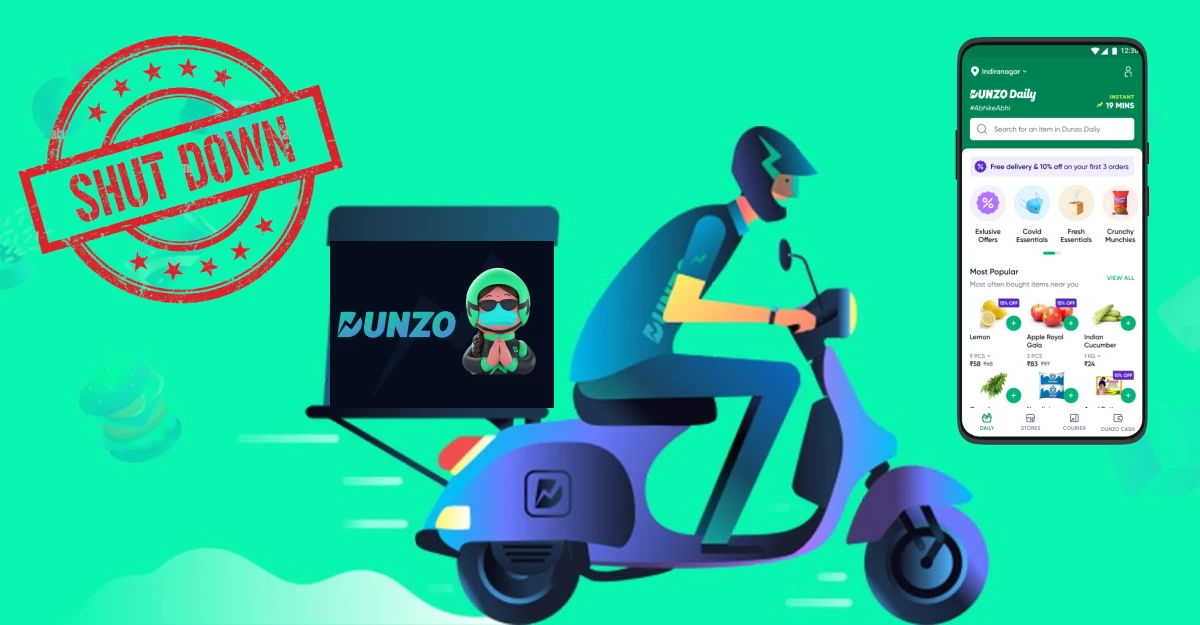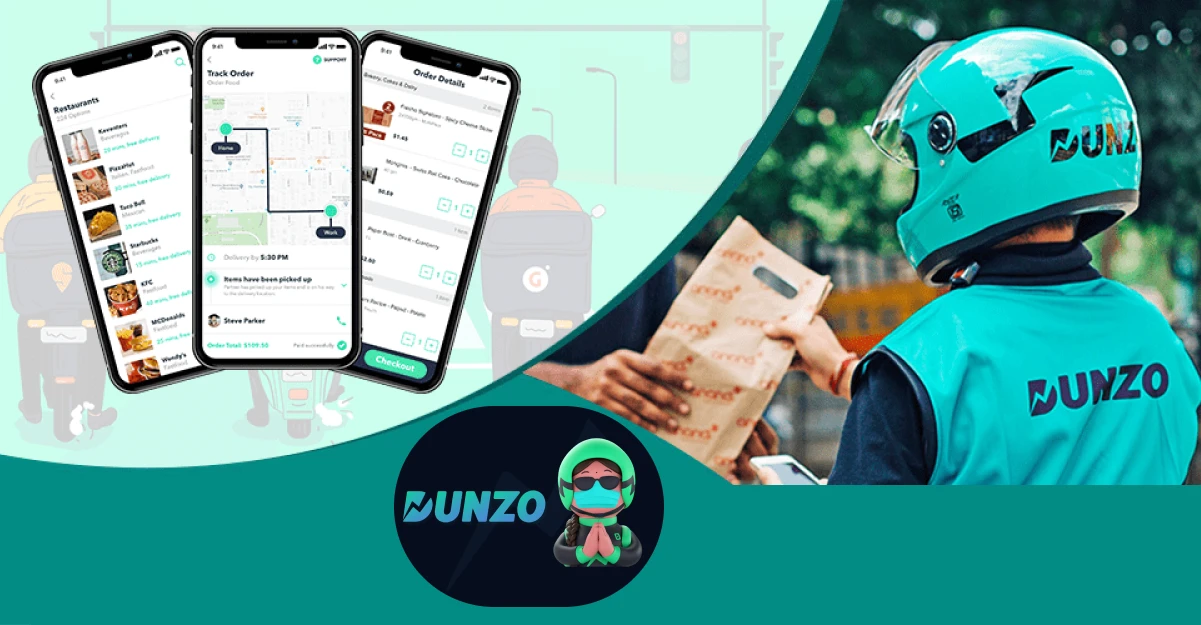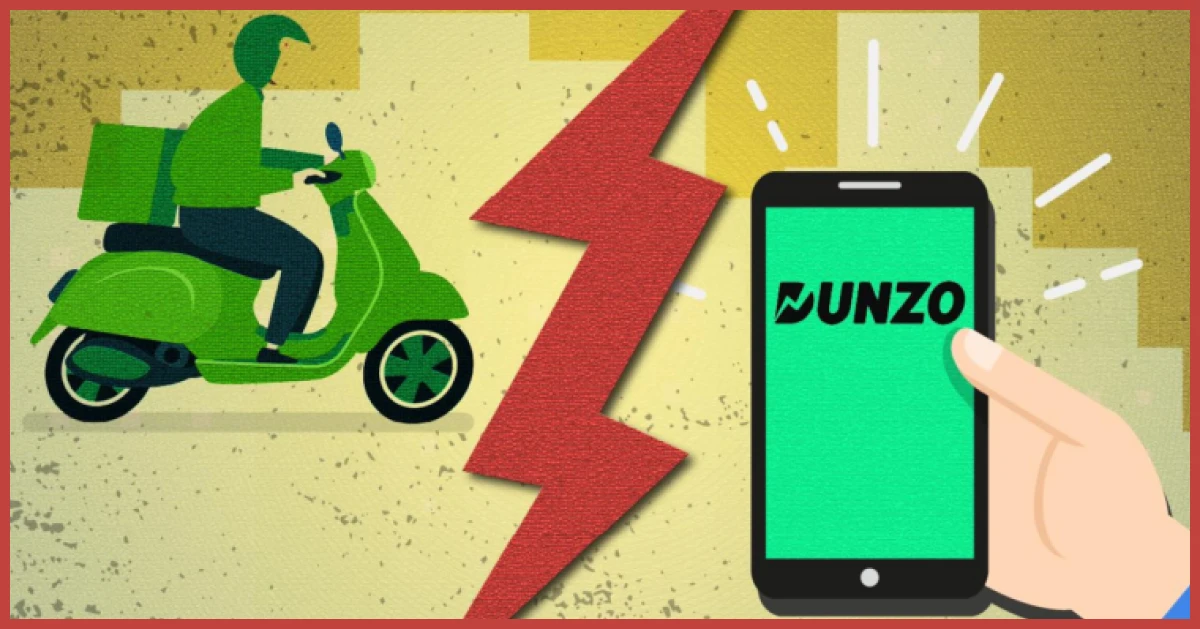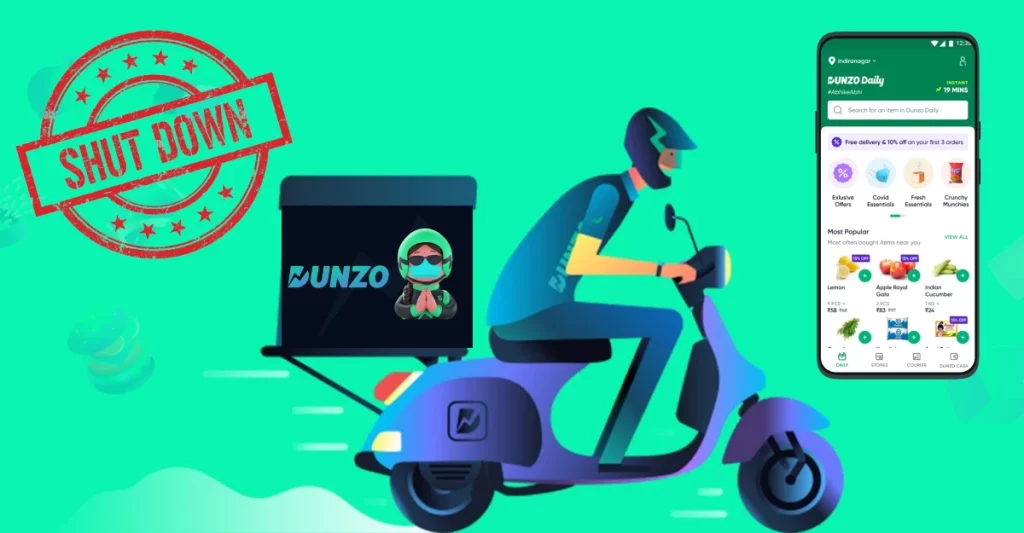If you’re curious about the future of Dunzo, the hyperlocal delivery service, you might be interested to know that it’s currently going through a rough patch. The news is bustling with the headline- Will Dunzo shut down?

Dunzo is facing some significant challenges due to which the company has put a halt to its plans for expansion. Also, there have been some high-level departures, including the head of finance and one of the co-founders. These developments have led to speculation about Dunzo’s financial sustainability.
The burning question on your mind might be: Will Dunzo shut down for sure? Well, by reading this article, you’ll get the answer you’re looking for!
(A) Synopsis of the speculation- Dunzo Shut Down
Dunzo’s quick commerce operations are currently in a state of disarray and appear to be winding down. Unfortunately, the growth in their B2B operations has not been enough to sustain the startup’s workforce and resources.
(A.1) Alarming Events at Dunzo
In the past few weeks, you might have noticed some alarming events at Dunzo-
- They are facing a severe cash crunch and are losing valuable talent.
- Key board members, including representatives of lead investors, have resigned.
- One of the co-founders, Dalvir Suri, has stepped down.
- Significant layoffs and departures have occurred across various teams.
- To sustain their operations, they are increasingly dependent on debt and payroll financing.
- They have accumulated losses exceeding $150 million, while their revenue from 2018 to 2022 was only around $12 million.
These challenges aren’t solely due to recent financial difficulties and a lack of clear product direction. They also highlight the broader issue of uncontrolled losses, even during times when Dunzo’s consumer business seemed to be thriving, indicating that their growth fell short of expectations compared to their competitors.
(A.2) Recent Developments in Dunzo

Let’s examine Dunzo’s recent developments-
- Dunzo is actively seeking additional capital from its largest shareholder, Reliance Retail, aiming to secure at least $20 million after falling short of its $75 million target through convertible notes.
- The company has adjusted its business model by closing 50% of its dark stores and shifting its focus towards the B2B sector.
- Dunzo has approximately 8-10 months of financial runway and is planning to reduce costs by 5-10% each quarter.
- In April, they managed to secure only $45 million of the $75 million target via convertible notes.
- B2B operations contribute nearly 35% of Dunzo’s revenue, with approximately 30,000 daily orders.
- The Dunzo Merchant Service has partnered with around 25,000 merchants, including notable names like Licious and McDonald’s.
Additionally, there are growing concerns about Dunzo’s ability to turn a profit, raising uncertainties about its future and the challenges it faces in the market. It’s essential to keep an eye on these developments if you’re interested in Dunzo’s journey.
Note: We have covered Dunzo business model in detail. Check out the article for detailed information.
(B) Why will Dunzo Shut Down? Factors contributing to the Failure of Dunzo’s Operations
The prime reasons for Dunzo Shut Down are-
(B.1) Failure in Scaling Up
Have you heard the shocking news about Dunzo? They’re making a comeback to their original hyperlocal model. They’ve shifted from dark store-centric quick commerce to collaborating with larger supermarkets and grocery stores on a revenue-sharing basis, just like their early days from 2015 to 2020. But this step is not as easy as it sounds. This model shift is full of challenges-
(B.1.1) The Quick Commerce Challenge

Here’s the twist- Dunzo’s recent quick commerce venture didn’t quite go as planned. The CEO, Biswas, pointed out that while quick commerce could work well in smaller Indian cities, they needed to redefine what convenience shopping means for those customers. Scaling quickly was tough due to consumer behavior.
(B.1.2) Dunzo vs the Competition
Now, when you look at the competition, rivals like Swiggy’s Instamart, Zomato’s Blinkit, and Zepto seem to have outpaced Dunzo. They’ve expanded widely in the quick commerce game. In response, Dunzo had to make some tough decisions, like closing dark stores with fewer than 1,000 orders per day and rethinking their strategy in different cities.
(B.1.3) Different Strokes for Different Folks
Each of these companies had its own strategy. Swiggy and Zomato used their existing delivery infrastructure, while Zepto focused on a single niche, quick commerce, claiming it gave them an edge with exceptional efficiencies.
So, Dunzo’s journey has taken some interesting turns, and the quick commerce landscape is evolving. It’s a lot to digest, but I hope this gives you a good overview of what’s been happening.
(B.2) Quick Commerce Experiment Fails
Let’s take a closer look at how Dunzo’s revenue stacks up against some key players like Blinkit, Zepto, and Instamart in the fiscal year 2022. The difference is quite striking.
(B.2.1) Dunzo vs the Heavy Hitters
In FY22, Dunzo’s operating income was just INR 54 Cr, a far cry from the impressive figures achieved by its rivals. Swiggy Instamart raked in a whopping INR 2,036 Cr, Blinkit pulled in INR 236.3 Cr, and even newcomer Zepto managed to reach INR 140 Cr in its first full fiscal year.
(B.2.2) Newcomers Outshine Dunzo
Surprisingly, even a relatively new player like Zepto managed to outperform Dunzo in operational revenue for FY22, despite Dunzo’s considerable head start in the market.
(B.2.3) Multiple Delivery Models
Dunzo, in its bid to boost revenue, has been offering B2B deliveries through Dunzo For Business (D4B) and B2C deliveries under two different models, hyperlocal and dark stores. Despite this diversified approach, revenue challenges persist.
(B.2.4) Dunzo’s Struggle to Innovate
What’s intriguing is that Dunzo had brand recognition and early success in hyperlocal deliveries, but when it transitioned to dark stores, it lost its pioneering edge.
(B.2.5) Lack of Innovation
While competitors like Zomato and Swiggy continued to experiment and evolve in the quick commerce sector, Dunzo seemed to remain stagnant, failing to keep up with the rapidly evolving industry.
(B.2.6) Supply Chain and Marketing Woes

The supply chain was another obstacle for Dunzo, especially in delivering fresh produce, while others made significant strides. Additionally, Dunzo’s marketing spending was comparatively lower, limiting its ability to compete effectively.
(B.2.7) Marketing Game
Competitors like Zepto made a big splash in the marketing game, even if they weren’t actually delivering products in 10 minutes. Dunzo, on the other hand, didn’t adopt such a strategy initially, missing out on building user excitement.
(B.2.8) Competition’s Cash Burn
To make matters more challenging, while Dunzo was more conservative in its spending, its rivals were willing to burn through cash to promote quick commerce aggressively.
So, this paints a picture of Dunzo’s struggle to keep pace with its competitors in a dynamic and fast-evolving industry. That’s why Dunzo’s quick commerce experiment tanked drastically.
(B.3) Unnecessary Expenditure: Spent Money in Wrong Direction
First of all, let’s look at the uncontrolled losses of Dunzo in last four fiscal years-
| Fiscal Year | Revenue | Expenses | Loss |
| 2019 | 0.76 crore | 172 crore | 169 crore |
| 2020 | 27.45 crore | 370 crore | 338 crore |
| 2021 | 25 crore | 239 crore | 229 crore |
| 2022 | 54.3 crore | 504 crore | 464 crore |
Let’s explore Dunzo’s financial struggles, starting with the substantial investment of $240 million from Reliance Retail in January 2022-
(B.3.1) Missed Opportunities
Despite this significant funding, Dunzo couldn’t steer in the right direction. The company’s current situation, characterized by a short financial runway and cash constraints, raises questions about how it managed to burn through such a substantial capital injection in less than two years.
(B.3.2) Critical Funding Shortfall
What’s concerning about Dunzo’s decline is its apparent lack of funds for daily operations and employee salaries, despite raising over $365 Mn since April 2019.
(B.3.3) Where did the money go?

It remains unclear where most of this capital was allocated over the past four years. A considerable portion likely went into expanding the quick commerce model and establishing a network of dark stores. Intense competition for dark stores drove up real estate prices, while procurement inefficiencies and heavy discounting eroded profitability.
(B.3.4) Unclear Revenue Growth
It’s also uncertain whether revenue growth improved in FY23 compared to the sluggish pace in FY22. Dunzo did not respond to questions regarding their revenue for the previous or current fiscal year.
(B.3.5) Outstanding Debts and Workforce Reduction
Dunzo has deferred employee salaries to September and owes more than INR 11 Cr to several vendors, some of whom have issued notices to the startup. To cut costs, the company also had to let go of over 30% of its workforce.
Thus, Dunzo’s financial situation paints a challenging picture, with questions remaining about how they allocated their funds and whether they can navigate these financial hurdles effectively.
(B.4) Substantial Impact from Reliance JioMart’s Price Cut on Deliveries

You might be interested to know that Reliance JioMart, which happens to be the largest customer of Dunzo Merchant Services (DMS), made a significant decision in June. They decided to lower the prices they paid for last-mile deliveries. This decision had a substantial impact, reducing DMS’ gross margins by a considerable 50-75%. The reason this is concerning is that JioMart contributes to a substantial 30-40% of DMS’s overall business.
(B.5) Excessive Monthly Burn Rate
In late September, Dunzo reportedly took measures to secure the capital it urgently needed. They put forth a proposal to reduce their monthly expenditure by half, targeting a burn rate of $300,000. This involved streamlining their workforce to approximately 200 employees. Remarkably, despite several rounds of layoffs and efforts to scale down their cash-intensive quick commerce operations, the company’s monthly spending had previously stood at a substantial $600,000.
(B.6) Failed Targets
As early as last year, it became evident that Dunzo’s ambitious transformation into an ultra-fast grocery delivery platform, directly competing with formidable rivals such as Swiggy’s Instamart, Zomato’s Blinkit, and Zepto, had faltered. Consequently, the company began making adjustments to its business model, suggesting that the economics of delivering groceries in just 19 minutes, a core product promise, was proving to be unsustainable.
(B.7) Funding Winter in the Indian Startup Ecosystem

You might find it interesting that a significant concern at the time was the growing reluctance of investors to put money into startups, especially in a capital-intensive sector like quick commerce. Faced with this challenge, Dunzo had to make a crucial decision.
They chose to put a halt to their expansion plans, which affected both Dunzo Daily and their business-to-business offering, Dunzo Merchant Services (DMS).
Dunzo was in a unique position. They had limited financial resources but needed to invest in and expand their venture to attract more funding. By temporarily pausing their expansion efforts, they managed to mitigate some of the challenges.
However, as 2023 drew to a close, it was evident that Dunzo Daily couldn’t sustain even at its reduced scale due to the constraints of limited resources and the funding climate at the time.
(C) Impact of Dunzo’s Failure in Operations
Let’s have a look at the impact of Dunzo’s Failure in operations in the form of a timeline-
| Date | Event Description |
| April 6, 2023 | Dunzo secures new funding in convertible notes led by Reliance Retail 30% of the workforce was laid off. 50% of the dark stores shut down |
| July 10, 2023 | Payment of June salary over Rs.75,000 deferred to mid-July. |
| July 18, 2023 | Dunzo seeks additional funding from Reliance after receiving $45 million in April |
| July 19, 2023 | Dunzo announces further job cuts and plans for steep cost-cutting of 30-40% The head of the product departsSalary for June and July deferred to September 4, 2023 |
| July 20, 2023 | Fresh layoffs initiated by Dunzo, resulted in employee terminations across various divisions. |
The disastrous impacts are described in the following points-
Business Restructuring
Dunzo is currently in the process of reconfiguring its business model and making significant changes. To streamline operations, they have decided to shut down 50 percent of their dark stores. Additionally, the company is actively exploring partnerships for deliveries with supermarkets and other merchants.
Dunzo, headquartered in Bengaluru, successfully concluded a $75 million financing round via convertible notes back in April. Notably, in January 2022, they secured $240 million in equity funding, with Reliance Retail leading the investment. Reliance Retail holds a 25.8 percent stake in the company, and Google has approximately a 20 percent stake. When you consider all their funding rounds, Dunzo has raised a total of $457.6 million across 19 rounds of financing.
Seeking Additional Capital From Reliance Retail
Dunzo successfully secured $45 million from two of its major investors, diligently focusing on cost reduction efforts. However, they still fell notably short of their intended goal of $75 million by a substantial margin, missing it by $30 million.
Delayed Salaries & Lay-offs
Desperately seeking solutions, the company resorted to additional delays in salary disbursements and made another announcement of around 200 job cuts. Employees, who had been on edge for some time, expressed their dissatisfaction with how the leadership delivered this news in the current week.
Question Remains
According to sources briefed on Dunzo’s numbers, there’s been an improvement in its unit economics, albeit at a much smaller scale. But despite all this, it’s not clear if Dunzo will deliver the goods again.
(D) How Reliance might be planning to bring down Dunzo with a hostile takeover?
Let’s look at the story from a different angle.
The following table describes the top investors in Dunzo-
| Shareholder’s Names | Stake Owned (%) |
| Reliance Retail | 25.8% |
| 18.5% | |
| Lightbox | 11.8% |
| Aspada Investments | 4.8% |
| Blume Ventures | 4.7% |
| Others | 34.4% |
In 2022, Reliance Retail acquired a substantial 25.8% stake in Dunzo, a move that held great promise for both parties. The strategic partnership between Dunzo and Reliance Retail seemed like a mutually beneficial venture.
Reliance’s Acquisition Spree
Reliance had been on an acquisition spree for four years, with the goal of positioning Reliance Industries among the world’s top 20 companies. Reliance Retail played a crucial role in this vision, expanding its brand portfolio across various sectors, including groceries, electronics, apparel, jewelry, furniture, and medicines.
Dunzo’s Diverse Service Range
Dunzo, a hyperlocal delivery startup, operated across these very sectors, making it a potential asset to Reliance Retail. India’s retail market was experiencing rapid growth, projected to exceed $800 billion by 2025.
Filling the Quick Commerce Gap

While Reliance Retail excelled in various areas, it lacked a strong presence in the quick commerce sector. This gap could be filled by Dunzo, as its rapid delivery capabilities could serve as the front end for Reliance Retail.
Quick Commerce Expansion and Challenges
In 2021, during the lockdown, quick commerce models gained immense popularity, with various companies launching quick delivery services. Dunzo, in its endeavor to scale up, heavily invested in the Dunzo Daily product.
Market Shift and Funding Hurdles
However, as the lockdown restrictions eased, the quick commerce model began facing challenges. To make matters more complex, Reliance limited further investments in Dunzo, pushing the company to transition away from dark stores to its previous B2B model. Despite offering B2B and B2C deliveries through different models, Dunzo couldn’t achieve the revenue growth it needed.
Impact of Reduced B2B Payments
JioMart, a significant B2B client for Dunzo, reduced its payments by almost 30-40%, further affecting Dunzo’s financial health.
Financial Struggles and Failed Funding Attempts
In FY22, Dunzo’s operating income of 54 Cr was far below competitors like Swiggy Instamart with revenue of 2,036 Cr, Blinkit with revenue of 236.3 Cr, and even Zepto, which managed 140 Cr in its first year.
Challenges in Raising the Capital
In March, Dunzo attempted to secure 100 million in capital from existing investors but only managed to raise 75 million. Their plea to Reliance for the remaining 25 million went unanswered. Additionally, Dunzo couldn’t attract funding from other investors without Reliance’s approval.
Downward Spiral: Delayed Salaries, Layoffs, Departures
These challenges led to delayed salaries, missed repayments, legal disputes, and a massive layoff of over 300 employees. Two co-founders and the head of finance also departed.
The Once Promising Future in Jeopardy
Now, a company that was a pioneer in the quick commerce sector, sought after by Zomato and TATA at one point, finds itself in distress and on the verge of shutting down. A potential distress sale looms in the future.
(E) Final Thoughts: Will Dunzo Shut Down?
In the uncertain journey of Dunzo, we’re left with a big question: Will Dunzo shut down for good? Despite its initial promise and partnerships, Dunzo has faced financial struggles, missed funding targets, and fierce competition in quick commerce.
Recent events like layoffs and delayed salaries don’t bode well. This story highlights how tough the quick commerce business can be. It’s not just about having a good idea; you need strong financial backing too.
Dunzo’s future is uncertain, and we’re left wondering if it can overcome these challenges or become another example of the challenges startups can face.
Let’s see what happens next!


Fantastic read! The insights shared in this article are truly valuable for anyone navigating the dynamic landscape. Keep up the excellent work!